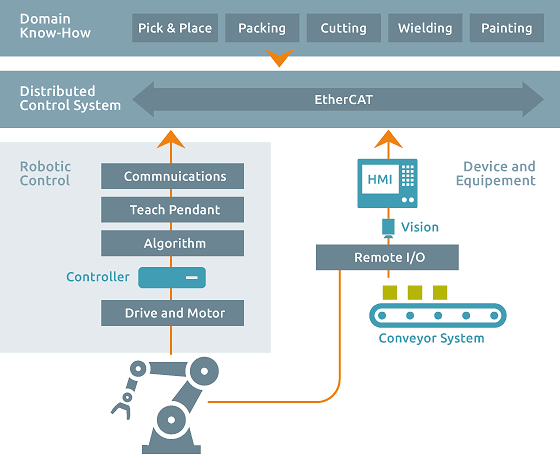The advent of robotics has revolutionized various industries, from manufacturing and healthcare to transportation and logistics. At the heart of these robots lies a sophisticated control algorithm that enables them to perform complex tasks with precision and accuracy. In this article, we will delve into the world of robot control algorithm development, exploring its evolution, key components, and the latest trends shaping the field.

Introduction to Robot Control Algorithms
A robot control algorithm is a set of instructions that dictates how a robot interacts with its environment, processes information, and executes tasks. These algorithms are designed to optimize robot performance, ensuring efficient and safe operation. The development of robot control algorithms involves a multidisciplinary approach, combining expertise in robotics, computer science, mathematics, and engineering.
Types of Robot Control Algorithms
- Feedback Control Algorithms: These algorithms use sensor data to adjust the robot’s behavior in real-time. Feedback control is essential for maintaining stability, precision, and accuracy in robot motion.
- Feedforward Control Algorithms: In contrast, feedforward control algorithms rely on pre-programmed instructions, without using sensor feedback. This approach is suitable for repetitive tasks, such as assembly line operations.
- Model-Based Control Algorithms: These algorithms use mathematical models to predict and optimize robot behavior. Model-based control is particularly useful for complex systems, like robotic arms and grippers.
- Learning-Based Control Algorithms: This category includes algorithms that enable robots to learn from experience, adapt to new situations, and improve their performance over time. Machine learning and artificial intelligence (AI) play a significant role in learning-based control.
Components of Robot Control Algorithm Development
- Sensors and Perception: Robots use various sensors, such as cameras, lidars, and force sensors, to perceive their environment and gather data. This information is then processed and used to inform control decisions.
- Control Theory and Mathematics: Mathematical models, like kinematics and dynamics, are essential for understanding robot behavior and designing control algorithms.
- Software and Programming: Programming languages, such as C++, Python, and MATLAB, are used to implement and simulate control algorithms.
- Hardware and Electronics: The physical components of a robot, including actuators, motors, and circuit boards, must be carefully designed and integrated to ensure seamless interaction with the control algorithm.
Latest Trends in Robot Control Algorithm Development
- Artificial Intelligence and Machine Learning: The integration of AI and machine learning is revolutionizing robot control, enabling robots to learn from experience, adapt to new situations, and make decisions autonomously.
- Cloud Robotics and Remote Control: Cloud-based robotics allows for remote control and monitoring of robots, facilitating collaboration and improving maintenance.
- Human-Robot Interaction: As robots become increasingly prevalent in everyday life, developing intuitive and safe human-robot interaction (HRI) is becoming a priority.
- Cybersecurity: With the growing use of networked robots, ensuring the security and integrity of robot control algorithms and data is becoming a critical concern.
Challenges and Limitations
- Complexity and Non-Linearity: Robot systems can exhibit complex, non-linear behavior, making it challenging to design and tune control algorithms.
- Uncertainty and Variability: Real-world environments are inherently uncertain and variable, requiring control algorithms to be robust and adaptable.
- Scalability and Flexibility: As robots become more prevalent, control algorithms must be able to scale and adapt to diverse applications and environments.
- Safety and Reliability: Ensuring the safety and reliability of robots is paramount, particularly in applications involving human-robot interaction.
FAQ
- Q: What is the primary goal of robot control algorithm development?
A: The primary goal is to create algorithms that enable robots to perform tasks efficiently, accurately, and safely. - Q: What are the key components of robot control algorithm development?
A: The key components include sensors and perception, control theory and mathematics, software and programming, and hardware and electronics. - Q: How is artificial intelligence (AI) used in robot control algorithm development?
A: AI is used to enable robots to learn from experience, adapt to new situations, and make decisions autonomously. - Q: What are some of the challenges and limitations in robot control algorithm development?
A: Challenges include complexity and non-linearity, uncertainty and variability, scalability and flexibility, and safety and reliability.
Conclusion
The development of robot control algorithms is a rapidly evolving field, driven by advances in robotics, computer science, and mathematics. As robots become increasingly integrated into our daily lives, the need for efficient, precise, and safe control algorithms will continue to grow. By addressing the challenges and limitations in robot control algorithm development, researchers and engineers can create more sophisticated and adaptable robots that transform industries and improve our world. As we move forward, it is essential to prioritize the development of intuitive, robust, and secure control algorithms that enable robots to reach their full potential and make a positive impact on society.
Closure
Thus, we hope this article has provided valuable insights into The Evolution of Robot Control Algorithm Development: Enhancing Efficiency and Precision. We appreciate your attention to our article. See you in our next article!
